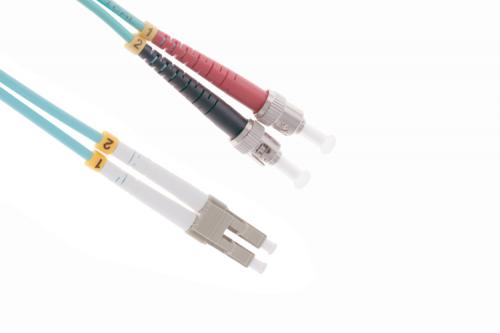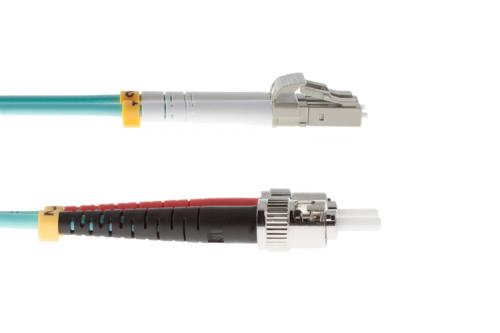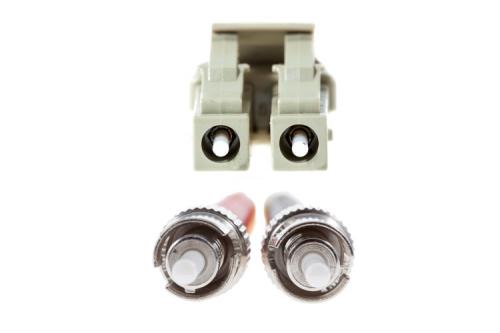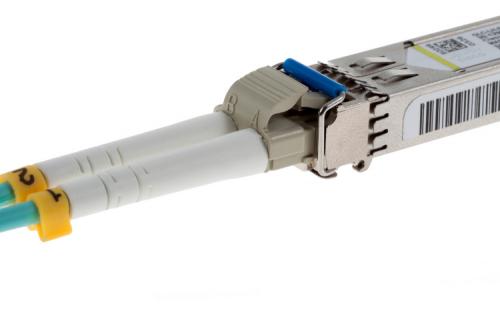I believe that those who often use Fiber Optic Cable must be familiar with Simplex vs Duplex. So what is Duplex in Fiber Optic Cable? Duplex Fiber Optic Cable can be half-duplex or full-duplex, but the transmission method of both is the same. Friends who are interested in this can read on!
Duplex Fiber Optic Cable
Duplex Fiber Optic Cable refers to a type of cable that consists of two strands of fiber optic cables within a single jacket. Each strand is used to transmit data in opposite directions, allowing for simultaneous two-way communication. This duplex configuration is essential for applications that require bidirectional data transfer, such as in networking and telecommunications.
In the latest point of view, Duplex Fiber Optic Cable continues to be a crucial component in high-speed data transmission networks due to its ability to support full-duplex communication. With the increasing demand for faster and more reliable data transfer, duplex fiber optic cables are being used in a wide range of applications, including data centers, telecommunications networks, and internet service providers.
Overall, Duplex Fiber Optic Cable plays a vital role in ensuring efficient and seamless communication by providing a reliable and high-speed data transmission solution for various industries. Its duplex configuration allows for enhanced performance and reliability, making it a preferred choice for modern communication networks.
Coaxial Duplex Cable
Coaxial Duplex Cable refers to a type of cable that consists of two separate conductors running parallel to each other within the same insulating layer. This design allows for the transmission of signals in both directions simultaneously, enabling bidirectional communication.
In the context of networking and telecommunications, duplexing is essential for enabling devices to both send and receive data over the same cable. This is particularly important in scenarios where real-time communication is required, such as in Ethernet networks or cable internet connections.
Advancements in technology have made duplexing more efficient and reliable, with modern coaxial duplex cables capable of supporting high data transfer rates and maintaining signal integrity over long distances. This has made them a popular choice for a wide range of applications, from home networking to industrial automation.
Overall, the duplexing capability of coaxial cables plays a crucial role in ensuring smooth and efficient communication between devices, making them a fundamental component of modern connectivity solutions.

Twisted Pair Duplex Cable
Duplex in cable refers to the ability to transmit data in both directions simultaneously. In the context of Twisted Pair Duplex Cable, this means that the cable is designed to allow for communication to occur in both directions at the same time. This is achieved by using two separate pairs of twisted wires within the cable, with each pair dedicated to transmitting data in one direction.
In the latest point of view, the use of Twisted Pair Duplex Cable continues to be a popular choice for networking applications due to its cost-effectiveness and reliability. The duplex capability of this cable allows for efficient communication between devices, making it ideal for scenarios where data needs to be transmitted bidirectionally without interference.
Overall, the duplex feature in Twisted Pair Duplex Cable plays a crucial role in ensuring smooth and uninterrupted data transmission, making it a valuable component in various networking setups.

Simplex vs. Duplex Cable
What is duplex in cable?
In the context of Simplex vs. Duplex Cable, duplex refers to a type of communication in which data can be transmitted in both directions simultaneously. This means that a duplex cable can send and receive data at the same time, allowing for more efficient and faster communication compared to simplex cables, which can only transmit data in one direction at a time.
From a modern perspective, duplex cables are commonly used in networking environments where bidirectional communication is essential, such as in Ethernet connections. By enabling simultaneous data transmission in both directions, duplex cables help to reduce latency and improve overall network performance.
Overall, the use of duplex cables has become increasingly important in today’s interconnected world, where fast and reliable communication is crucial for various applications such as data centers, telecommunications, and cloud computing.

Duplex Cable Connectors
Duplex in cable refers to a type of cable that consists of two separate fibers within the same cable jacket. Each fiber is used for transmitting data in a different direction simultaneously, allowing for bidirectional communication. This setup is commonly used in networking and telecommunications applications where data needs to be sent and received at the same time.
In the context of Duplex Cable Connectors, these connectors are specifically designed to accommodate duplex cables and ensure proper connectivity between devices. They are typically equipped with two ports to support the bidirectional transmission of data.
From a modern perspective, duplex cables and connectors continue to be essential components in high-speed data transmission systems, such as fiber optic networks. The ability to transmit data in both directions simultaneously helps to optimize network efficiency and performance. As technology advances and data demands increase, the importance of duplex cables and connectors in ensuring seamless and reliable communication will likely continue to grow.
Finally
If you’re looking for a reliable optical isolator, you’re at the right place. At Fiber Life, you can also buy fiber patch cables, fiber trunk cables, optical amplifiers, SFP+, QSFP+, and many other products at affordable rates.
Explore our products here or contact us for details today!










